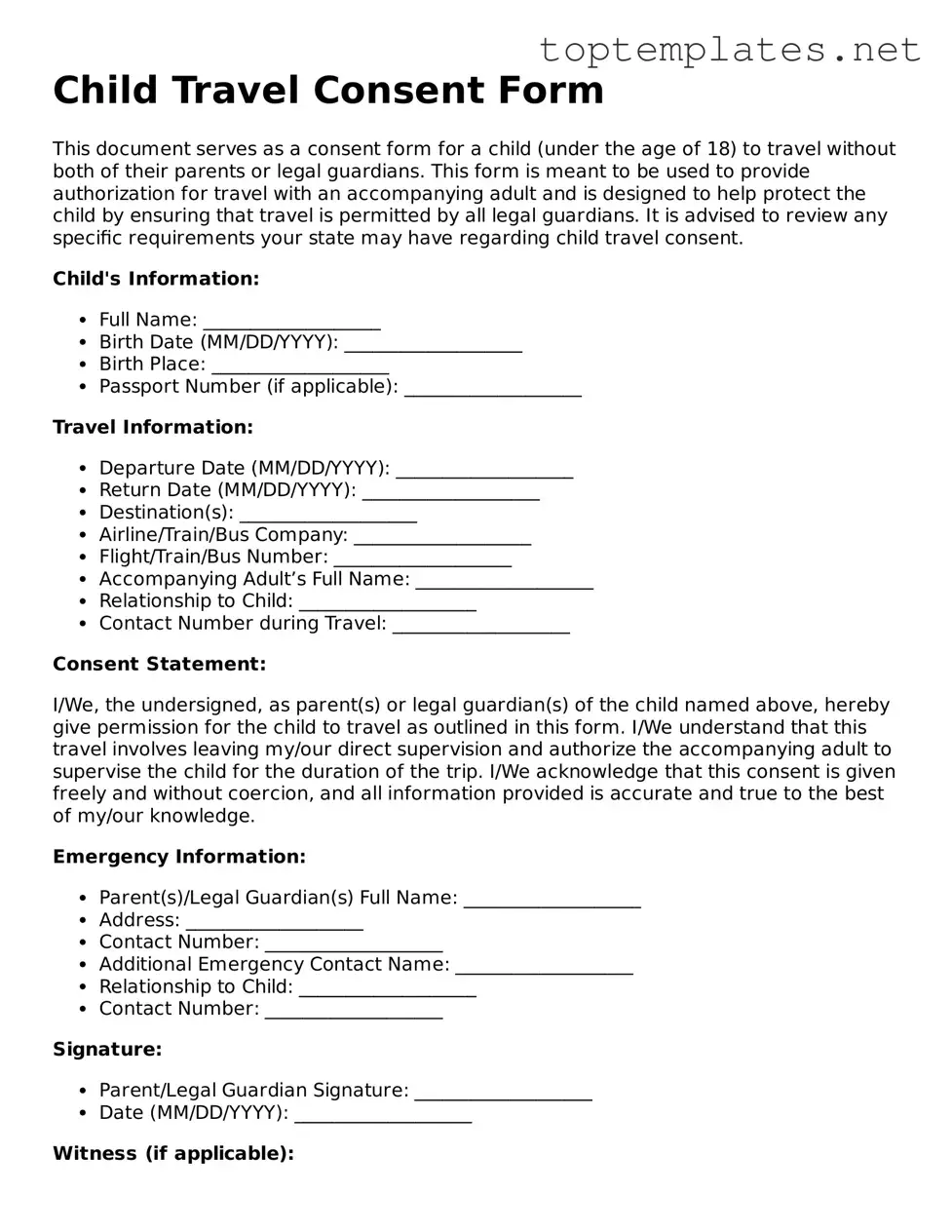What is a Child Travel Consent Form?
A Child Travel Consent Form is a legal document that grants permission for a minor child to travel without their parents or legal guardians. It is used to provide evidence that the child has the consent of the absent legal guardian(s) to travel, especially for international trips or in situations where the child is traveling with an adult who is not their legal guardian.
Who needs to sign the Child Travel Consent Form?
The child's parent(s) or legal guardian(s) need to sign the Child Travel Consent Form. If the child is traveling without either legal parent or guardian, it’s crucial that all custodial parents or guardians provide their signed consent. In cases where a sole guardian exists, relevant documentation proving sole custody may be necessary to attach along with the consent form.
What information should be included in the form?
The form should include the full name and date of birth of the child, the name(s) of the person(s) the child is traveling with, the dates of travel, the destination(s), and the reason for travel. Contact information for the parent(s) or legal guardian(s), as well as any medical information or allergies of the child that should be known, are also important to include. A notarization signature may also be required to attest to the authenticity of the parent or guardian's signature.
Is notarization of the consent form always necessary?
While not always mandatory, getting the Child Travel Consent Form notarized is highly recommended. Notarization adds a level of verification to the authenticity of the form and can help prevent any challenges or questions about the child’s permission to travel, especially in international travel or by airline companies.
Do airlines require a Child Travel Consent Form?
Most airlines require a Child Travel Consent Form for minors traveling without a parent or legal guardian, especially for international flights. Policies vary by airline, so it is important to check with the specific airline prior to travel. Having this form can streamline the check-in and boarding process.
How long is the Child Travel Consent Form valid?
The validity of the form should be specified within the document itself and typically aligns with the dates of travel. However, for frequent travelers, a form could be valid for up to a year or more, depending on what the signing parent(s) or guardian(s) feel is appropriate. It is important to ensure the form reflects current travel plans and is updated as necessary.
